#Jennifer Meyers
Explore tagged Tumblr posts
Text

. - He's dead, all right. So cold. - Is the pizza?
The Slumber Party Massacre, Amy Holden Jones (1982)
#Amy Holden Jones#Rita Mae Brown#Michele Michaels#Robin Stille#Michael Villella#Debra De Liso#Andree Honore#Gina Smika Hunter#Jennifer Meyers#Joseph Alan Johnson#David Millbern#Stephen L. Posey#Ralph Jones#Sean Foley#1982#woman director
33 notes
·
View notes
Photo
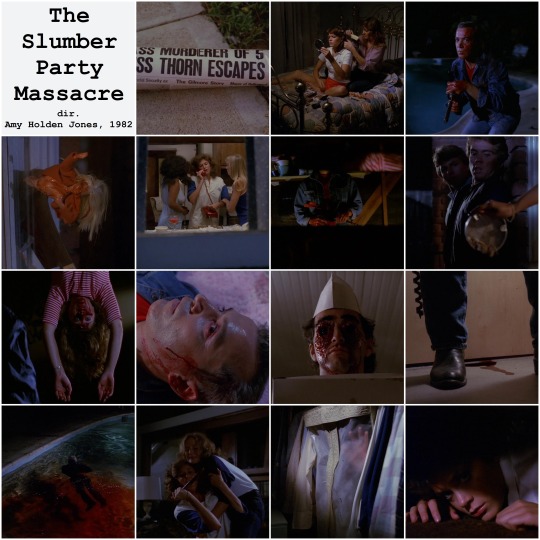
The Slumber Party Massacre
directed by Amy Holden Jones, 1982
#The Slumber Party Massacre#Amy Holden Jones#movie mosaics#Robin Stille#Jennifer Meyers#Michael Villella#Andree Honore#Michelle Michaels#Debra Deliso#Joseph Alan Johnson#David Millbern#Gina Mari#Aaron Lipstadt
14 notes
·
View notes
Text

My cover for Usagi Yojimbo 10,000 plums #3 is now available for preorder
42 notes
·
View notes
Text

Comic - Space Usagi: Death And Honor #01 (2023)
Art by Jennifer L. Meyer
#Comics#Usagi Yojimbo#Space Usagi Death And Honor#Science Fiction#Jennifer L Meyer#Art#Dark Horse Comics#Dark Horse#Rabbits
25 notes
·
View notes
Text








Criminal Minds + MBTI
"The bond between colleagues is sometimes stronger than that between family, and the team that hunts monsters together never breaks." – Aaron Hotchner (Season 3, Episode 16)
#criminal minds#criminalminds#criminal minds edits#aaron hotchner#aaronhotchner#spencer reid#spencerreid#dr. spencer reid#jennifer jareau#jj#derek morgan#jenniferjareau#emilyprentiss#emily prentiss#jason gideon#jasongideon#david rossi#davidrossi#rossi#penelopegarcia#penelope garcia#criminal minds cbs#my edits#meyer briggs#mbti
34 notes
·
View notes
Text

Jennifer L Meyer - Maleficent
99 notes
·
View notes
Text
Dust Volume 10, Number 11

Photo of Alan Licht by Stu Lax
One of the oddest, most disturbing developments in recent years is the devaluation of expertise. If a souped up auto complete program can write a screenplay, who needs writers? If scientific guidelines about how to stave off a plague make us angry or confused, who wants them? Anybody can be anything, given enough cash in their pockets, thought, evidence and fact be damned. So, it is somewhat unfashionable that Dusted continues to seek out artists who are good at what they do, whether they are conservatory trained or DIY, steeped in historical tradition or trying something new. Our monthly Dust highlights another batch of them. Bill Meyer, Andrew Forell, Tim Clarke, Jennifer Kelly, Jonathan Shaw, Ian Mathers and Bryon Hayes contributed.
John Butcher / Florian Stoffner / Chris Corsano — The Glass Changes Shape (Relative Pitch)
This autumn, English saxophonist John Butcher celebrated his 70th birthday. For the occasion his fellow musicians donned t-shirts proclaiming, “You can only trust yourself and the first ∞ John Butcher albums.” Yes, he puts out quite a few, and no, I’m not up to date. The completist’s task is even more daunting when one considers just how much music is packed into each of the nine improvisations on this concert recording, his second with guitarist Florian Stoffner and percussionist Chris Corsano. Timbres, volumes and modes of attack change from second to second, living up the album’s title; not even the music’s form I fixed. No one’s resting on laurels here. Corsano plays with rare spaciousness, and Butcher often seems to be playing up the contrasts between his horns’ tonal fluidity and the jagged edges of Stoffner’s contribution. Pardon the paradox, but each track is a subdivision of ∞, and there’s no end to the time you could spend getting profitably lost in one.
Bill Meyer
Cybotron — Parallel Shift (Tresor)
in 2019, legendary Detroit producer Juan Atkins rebooted his 1980s electro project Cybotron with Laurens van Oswald (nephew of Basic Channel founder Moritz) and Tameko Williams (Detroit In Effect). Atkins takes the technological matrices of his hometown’s now largely defunct manufacturing plants and Kraftwerk’s “Autobahn” and twists them through an afro-futurist wormhole. The trio’s latest 12” single “Parallel Shift” sets Atkins’ robotic vocals and lockstep machine beats against melodic synths and warm bass tones. As Atkins insists on a “parallel shift”, smuggled elements of Clintonesque funk and drifting reverie suggest subversion of strictly linear time. The B-side “Earth” is a more straightforward piece of electro with the emphasis on syncopation. The track flickers with sci-fi synths as Atkins posits human rhythms as a form of cosmic consciousness. Volume up and eyes closed, you will be transported.
Andrew Forell
Dean Drouillard — Mirrors and Ghosts (self-released)
This instrumental solo album by Canadian guitarist Dean Drouillard is a series of hazy noir scenes. At its brightest and most melodic, as in “Portland” and “Gorgasuke,” it’s reminiscent of the vivid, playful miniatures of Opsvik & Jennings’s A Dream I Used to Remember. Elsewhere, the album is decidedly more atmospheric and ambient, akin to the widescreen explorations of Daniel Lanois’s Flesh and Machine. The album’s largely introspective nature is no surprise when you learn Drouillard played and recorded all the instruments himself. His guitar playing in particular is evocative and tastefully restrained. At once intimate and widescreen, Mirrors and Ghosts feels both eerily melancholic and gently uplifting.
Tim Clarke
Fievel Is Glauque — Rong Weicknes (Fat Possum)
youtube
Though Fievel Is Glauque are technically a duo — songwriters Zach Phillips (Blanche Blanche Blanche) and Ma Clements on keys and vocals, respectively — for new album Rong Weickes they assembled a crack team of six other players. Musicians on drums, bass, electric guitar, woodwinds and brass flesh out a dizzyingly complex and gratifyingly daft soundworld. Think 1970s prog-folk; think Napoleon Murphy Brock–era Frank Zappa; think Julia Holter spiraling down a jazz-fusion black hole. Rong Weicknes is a LOT. Tellingly, many of the album’s most accessible songs, including singles “As Above So Below” and “Love Weapon,” plus the beautiful and relatively calm “Toute Suite,” arrive early in the track list. Opener “Hover” is perhaps the best example of the band’s bonkers “live in triplicate” working method, in which multiple takes are stacked one on top of another, then chiseled down to reach a final mix. It’s chaotic, like multiple candy-colored Escher staircases spiraling off in different directions at once. In this realm of music-making, too much is never enough, and the line between virtuosic brilliance and over-the-top absurdity bends and blurs. Given the chaos is cumulative, listening to the album from front to back tends to result in ear fatigue during the second half, no matter how many brave attempts it takes to tackle it all in one go.
Tim Clarke
Helena Hauff — Multiplying My Absurdities (Tresor)
youtube
Hamburg DJ and producer Helena Hauff’s debut EP for Tresor is three tracks of full-on throwback acid trance. Expertly structured over 22 minutes of build, crescendo and release, Hauff combines thumping beats and bass tones with a detached darkwave cool and a healthy smear of analogue soot. Think Roland drum machines & 303 bass, squelching synths, arpeggio runs and all nature of odd grimy ghosts grumbling in the machines. Hauff reaches her apotheosis on “Punks in the Gym”, named for an Australian rock climb known as the hardest in the world (and now closed as an Indigenous Heritage site). It starts hard, with the bass in the red zone and the drums not far behind, and arpeggiated synths screaming like a drill sergeant. The plateaus, when they come, are mere toeholds for the next ascent. It’s a relentless, punishing piece. And when, near the end, Hauff drops everything but the kickdrum, it’s like watching the sun rise at an outdoor rave to, hearing nothing but your beating heart.
Andrew Forell
Rafael Anton Irisarri — Façadisms
youtube
Rafael Anton Irisarri creates music with the grandeur of a vast, wasted landscape. He brings his experience as a mastering engineer to bear on all his recordings, rendering them dense and immersive, stacked high with thick waves of guitar and synthesizer tone. Façadisms is no exception and features two highlights. “Control Your Soul’s Desire For Freedom” features searing cello from Julia Kent and angelic vocals by Hannah Elizabeth Cox, and “Forever Ago is Now” features string arrangements from T.R. Jordan, which carry the album’s most anthemic chord progression. Façadisms’ blasted textures are never less than compelling, but these tracks are twin peaks within the record’s glowering sonic geography.
Tim Clarke
Charlotte Jacobs — Atlas (New Amsterdam)
Charlotte Jacobs’s songs are a little shy. They lurk in corners and grow up from cracks. They venture fluidly out of empty space, eddying and cascading through echoing caverns, with just a little glitch beat or a surge of synth tones to ground them. Jacobs is a conservatory Belgian composer and singer here making her first solo album. Her voice comes in breathy flutters, a little like Mirah at her most acoustic and spare, but she hedges that fragile bloom in masses of digital sound. A devotee of Ableton, she makes the synth sound like all kinds of instruments, a quacking oboe in “Celeste,” a ghostly choir in CYTMH.” Records seldom sound simultaneously this bare and this layered. There are many elements in play, but all scrubbed clean and hemmed in by silence.
Jennifer Kelly
Alan Licht — Havens (VDSQ)
With Havens, Alan Licht flips the attack-decay-sustain-release envelope of the guitar on its head, folding notes and chords over each other in waves. He does this with a heft to his tone, so that chord progressions become waterfalls and melodies emerge like vine-like shoots, growing in many directions simultaneously. Licht’s songs mesmerize with repetition, but the tones resonate such that they fold back on themselves, creating entirely new patterns for us to discern. The cover art reflects his steel string sorcery, as a dull-colored house surrounded by twilit swirling clouds emits beams of red, yellow, and orange light from its many orifices. A variety of energy levels and frequencies are represented here, and they reveal themselves in surprising ways. Throughout his career, Licht has straddled the worlds of indie rock and the avant-garde, and Havens tugs at both sides, creating a new universe entirely: one where resonance rules over everything else.
Bryon Hayes
Longobardi + Cecchitelli — Maloviento (LINE)
Italian sound artists Ernesto Longobardi and Demetrio Cecchitelli create minimalist environmental works built from droning sub-oscillations that emerge from a haze of white noise. The four pieces on Maloviento, titled by duration, are arctic. Slow, evocative of shifting ice and wind swirling across bleak landscapes.. 14’24” is frigid amalgam of staticky cracks and sheets of white noise that rise and fall with increasing intensity. The duo intersperses these with sounds of dripping stalactites and pings of some distant beacon signaling into the abyss. It immerses the listener in an alien and alienating environment in which you find yourself clinging to these noises as the only way to get your bearing. 21’18” is slightly kinder. More recognizably human sounds emerge. Breath labored by cold, a trudge of footsteps and a muttering voice culminating in the introduction of a flute. Tentative at first, it gathers strength and warmth before being absorbed into the ice. Riveting stuff.
Andrew Forell
Man/Woman/Chainsaw — Eazy Peazy (Fat Possum)
youtube
Young London sextet Man/Woman/Chainsaw emerged from the scene that includes bands like Black Midi and Black Country, New Road with whom they share a similar omnivorous musical DNA. Vocalists, bassist Vera Leppanen and guitarist Billy Ward have been playing together since they were 14. Now approaching 20, and joined by contemporaries Emmie-Mae Avery on keys, violinist, Clio Harwood violin, Ben Holmes on guitar and drummer Lola Waterworth, M/W/C play punk infused theatrical rock, not quite as knotty as their near contemporaries, but fully embracing the chaotic energy of musicians pushing themselves to fit all their ideas into songs that dance delicate and furious. The acutely observed kitchen sink dramas of “The Boss” and “Sports Day” burst from the speakers, withering in word, and balanced by Harwood’s sawing violin and Avery’s delicate keys. Leppanen a powerhouse on the former, Ward all snarling self-deprecation on the latter. In contrast “Grow A Tongue In Time” is almost dainty with its curlicue of violin, bass, and keys tempered by Leppanen’s rasp that speaks of a desperate frustration echoed in the washes of cymbals that swarm towards the end. A band with space to grow and one to watch out for.
Andrew Forell
The Modern Folk — Primitive Future III (Practice)
This expansive collection spans 20 songs and nearly as many years for the folk centric but ambi-curious guitarist Joshua Moss (who, full disclosure, recently started writing for Dusted). His music here takes many forms, from the blues rock chug of “Shiver Shaker,” which could pass for an alternate universe outtake from Jon Spencer’s Heavy Trash to the cosmic twang of “Hippy Sandwich,” running closer to Ripley Johnson’s Rose City Band or the Heavy Lidders or whatever Matt Valentine is doing this week. There’s room, too, for lucid, radiant blues-folk picking, twined with bowing in “Braided Channels” or abetted in shimmery gossamer by Jen Powers on dulcimer on “You’ll Have That,” or left to strike out unadorned on luminous (and aptly titled) “Subdued.” Some artists try something different to prove they can. Moss lets the change grow out of old roots, supple, green and lovely. One other item of note: all proceeds are earmarked for hurricane relief.
Jennifer Kelly
Paprika — S/T (Iron Lung)
Paprika had already released the excellent, caustic Let’s Kill Punk LP this year, so this new EP is an unexpected November surprise. Are you thankful? It’s pungent and nasty stuff — Paprika sounds like the grittiest elements of NYC punk rawk, c 1976, partying with the hepped-up hardcore of Government Issue or Dirty Rotten EP-period DRI. If that sounds like fun, it sort of is, if you can listen past the nihilistic sentiments expressed in tunes like “Catatonic Pisser” and “Wasting Time.” This reviewer especially likes the self-lacerating qualities of “Supply Chain Wallet,” which explores the ways in which even filthy, greasy punks have a variety of fashion sense, implicating them in capital’s machinery. The band is more direct: “I’m chained to my wallet / Don’t you fuckers know? / Money is dirt.” Word.
Jonathan Shaw
Rock Candy — Swimming In (Carbon)
Rock Candy is Krysi Battalene (Mountain Movers, Headroom) and Emily Robb. Both are guitarists of just renown who, if they decided to open up an optical shop, would specialize in third-eyewear. Together, they refrain from six-string calisthenics in order to focus on nuanced expressions of motion. “Swimming In” is all about drift, albeit with enough surface tension for a stuttering guitar figure to loom over the undulating organ-scape. “Across A Mirage” sets slide vs. reverb, each fighting for footage on a mechanical Clydesdale beat. The cost of vinyl being what it is, some folks might question the point of picking up singles. This year, Rock Candy is the angle that dispels such faithless notions.
Bill Meyer
Sif — Aegis of the Hollowed King (self released)
youtube
If you were going to make solo instrumental doom metal about video games, Dark Souls is certainly one of the few that feels like it actually fits. What makes the second LP from New Orleans-based Sif work as well as it does, though, is how much Aegis of the Hollowed King engages with what’s actually compelling about the FromSoftware series beyond any surface level trappings of swords, monsters and boss fights. Here focusing on what even they admit is an “understandably maligned masterpiece,” Dark Souls II, these four tracks don’t try to overwrite the game’s fantastic actual soundtrack (by Motoi Sakuraba and Yuka Kitamura). Instead they invoke how much of the experience of painstakingly making your way across Drangleic is suffused with melancholy horror (yes, occasionally leavened with moments of brutally-won success). That atmosphere has been translated into a doom metal idiom, but that just means even the most elegiac elements here continue to crush.
Ian Mathers
Sulida — Utos (Clean Feed)
The phrase “good old-fashioned free jazz” could be applied to this Norwegian trio’s album, no disrespect intended and none dealt. Marthe Lea’s gruff tenor sax balances the unbridled emotion and considered poise of Ayler and Tchicai, and Jon Rune Strøm and Dag Erik Knedal Anderson negotiate points of structure vs. flow in ways that would do Hopkins and McCall proud. There are also moments that bring to mind Don Cherry if he had given full allegiance to the Swedish woods instead of the world. And yet, the character of each musician shines through, so that this music feels alive rather than merely reanimated. Ready to rumble by unfailingly lyrical, Utos is a friend in unfriendly times.
Bill Meyer
#dusted magazine#dust#john butcher#bill meyer#cybotron#andrew forell#Dean Drouillard#tim clarke#fievel is glaque#Helena Hauff#Rafael Anton Irisarri#charlotte jacobs#jennifer kelly#alan licht#bryon hayes#Longobardi + Cecchitelli#the modern folk#Man/Woman/Chainsaw#paprika#jonathan shaw#rock candy#ian mathers#sif#sulida
19 notes
·
View notes
Text
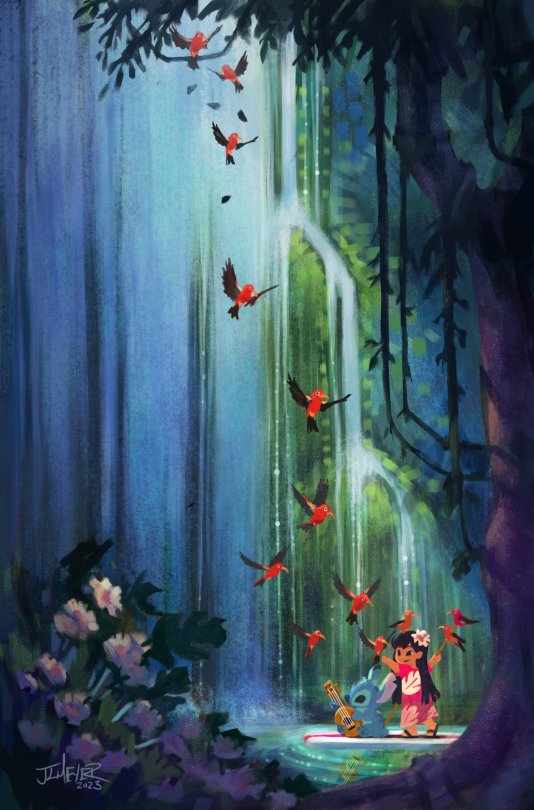
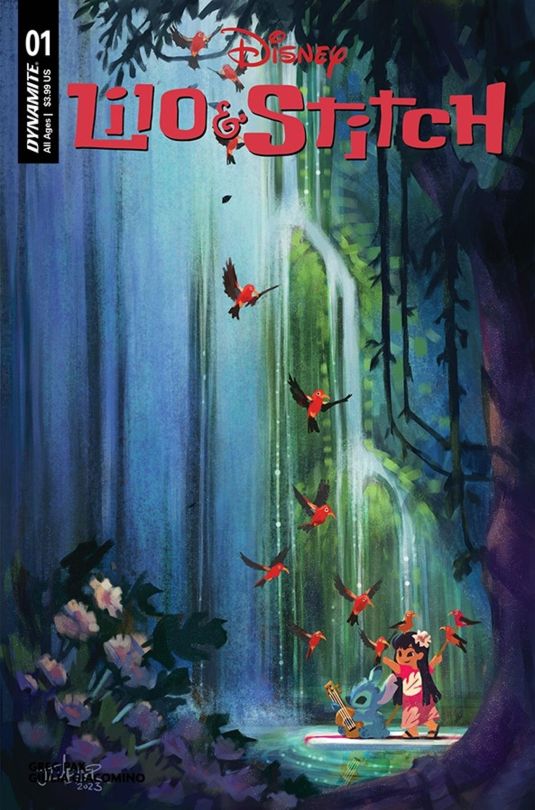
Lilo And Stitch #01 (2023)
Art by Jennifer L. Meyer
#Comics#Dynamite Comics#Lilo And Stitch#Jennifer L Meyer#Film#Animation#Cartoons#Science Fiction#Art#Dynamite#2023#2020s#20s#Original Art#Before And After#Disney#Walt Disney
84 notes
·
View notes
Text
2025 reading log:
it’s a love story - annabelle monaghan
intermezzo - sally rooney
animal farm - george orwell
all the bright places - jennifer niven
the house of my mother - shari franke
magnolia parks: the long way home - jessa hastings
the consequences of falling - liliana rose hastings (reread)
beg, borrow, or steal - sarah adams
i’ll paint you a sunset someday - bex alexander
play along - liz tomforde
exes and o’s - amy lea
whirlwind - kayla grosse
the favorites - layne fargo
unsteady - peyton corinne
twilight - stephenie meyer
well, actually - mazey eddings
reckless - elsie silver
deep end - ali hazelwood
the comeback - ella berman
the clique - lisi harrison (reread)
#2025 reading log#bookblr#booklr#readblr#aesthetic#books#sally rooney#george orwell#jennifer niven#sarah adams#jessa hastings#shari franke#liz tomforde#bex alexander#amy lea#layne fargo#peyton corinne#stephenie meyer#ella berman#lisi harrison#jess writes
8 notes
·
View notes
Text
Book poll round 4
after i finish this poll series (the nex poll w/ top 6, then 3, then 2) then i will do another one with suggestions from people in the comments! so if there is a book or series you want to see in the next poll series, comment it down below!
#six of crows#leigh bardugo#soc#red rising#pierce brown#artemis fowl#eoin colfer#the hunger games#thg#suzanne collins#fablehaven#brandon mull#the inheritance games#jennifer lynn barnes#magisterium#cassandra clare#holly black#the lunar chronicles#marissa meyer#cinder#all of us villains#amanda foody#c.l. herman#the maze runner#tmr#james dashner#a good girl's guide to murder#holly jackson#the wingfeaher saga#andrew peterson
31 notes
·
View notes
Note
do you play any tcgs?
Aaaah no, I only like collecting cards, but I don't know the rules to a SINGLE TCG! I have a few Pokemon cards I got gifted by friends and then also a HUGE collection of Bella Sara cards, which was more for trading than playing with anyway.
DOES ANYONE REMEMBER BELLA SARA??? IF ANYONE DOES, PLEASE TELL ME WHICH ONE WAS YOUR FAVORITE HORSE, I GO FIRST:
NANNA and GREY from the first Bella GOLD series
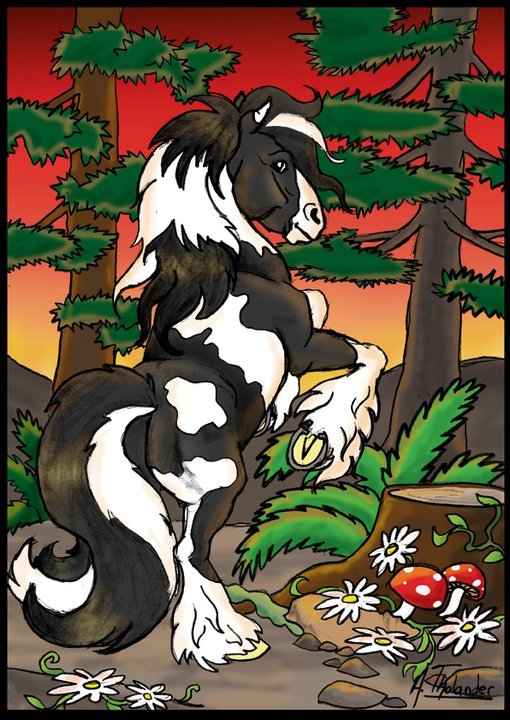


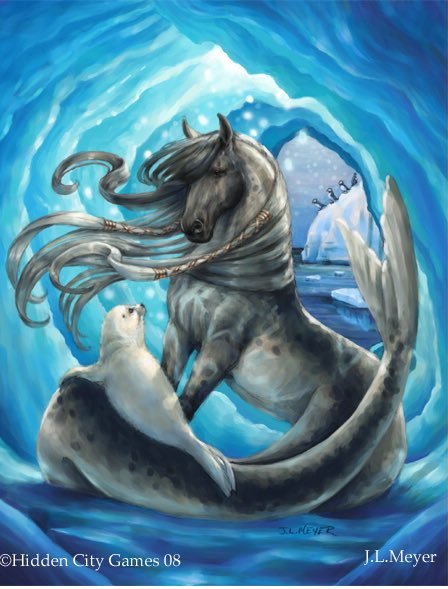
And then I also really loved Inupiat and Aleut from Native Lights And then also 50 other horses as well, I have WAY too many favs...
127 notes
·
View notes
Text

Maleficent #1 (2023) Cover by Jennifer L. Meyer
#maleficent#jennifer l. meyer#jennifer meyer#disney#sleeping beauty#comics#comic book#comic book art#comic books#art#illustration
179 notes
·
View notes
Text

Camp Cucamonga
I first heard of this movie from a podcast. Its a pretty cute kids movie, i enjoyed watching it. It had a lot of stars from the 80s/90s which was fun to see. If i had seen it when i was 12 i would have loved it.
🔗 IMDB
#movies#made for tv movie#camp cucamonga#jennifer aniston#john ratzenberger#candace cameron bure#danica mckellar#breckin meyer#josh saviano#jaleel white#sherman hemsley
10 notes
·
View notes
Text
Marissa Meyers, Melissa De La Cruz, and Jennifer Donnelly are carrying the fairy tale retelling ya market on their BACKS
#day musings#So I'm on to book three of descendants#and I'm like :/ theyre really not letting her show her ability to worldbuild#but I'm actually think of Marissa Meyers#who wrote Heartless and The Gilded Duology#and then I'm checking Ms Cruz's written works#and I'm like. Where's that beauty and the beast retelling#also she wrote thos hamiltom fanfic books???#crazy#Well the beauty and the beast retelling#That's actually Jennifer Donnelly#aka the writer of my like. Favorite mermaid series: The WaterFire Saga#and it's like#Goddamn#Do you think they all know each other#They should#also I've realized I can actually read books now#Like I have the time#I might pick up Prisoner's Throne#or Bookstores and Bonedust
17 notes
·
View notes
Text

It's almost Christmas and I thought I should share a picture of my "Christmas" bookshelves.
#mybooks#booklr#bookblr#books#funko pop#funko and books#my bookshelf#bookshelves#book nerd#holly black#stephanie meyer#maggie stiefvater#jennifer lynn barnes#december 2024
3 notes
·
View notes
